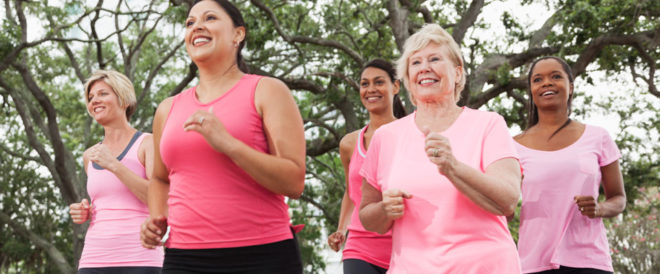From the first moment my wife discovered she
had breast cancer in March of 2011, there was a deafening silence from the men
I knew. Even ones whose wives, mothers or girlfriends had breast cancer seemed
to have received a gag order from some Central Cancer Command and did little
more than mumble about the experience. Not one to shut up for any known reason,
I started this blog…That was four years ago – as time passed, people searching
for answers stumbled across my blog and checked out what I had to say. The following
entry first appeared in March of 2012.
I’ve talked about
this subject before, but it’s one that doesn’t seem to yield to mere
discussion:
As of this moment,
I still alternately loathe exercise and acknowledge its importance. Even
acknowledging its importance, I rarely do it. And to tell you the truth, I’m
completely unsure about the connection between exercise and avoiding or helping
cure cancer. So I decided to do some research and was surprised by what I found
– or more precisely what I DIDN’T find. I didn’t find a clear explanation of
the biological mechanisms connecting exercise and cancer survivorship.
I am ALWAYS leery
when “researchers” make broad, sweeping, seemingly miraculous claims about
anything – like those constantly irritating little “do this one weird fact” ads
promise. In this article, identical statements are made but completely
unsupported: “Researchers have established that regular physical activity can
improve health by helping to control weight, maintaining healthy bones,
muscles, and joints, reducing the risk of developing high blood pressure and
diabetes, promoting psychological well-being, and reducing the risk of death
from heart disease, reducing the risk of premature death. In addition to these
health benefits, researchers are learning that physical activity can also
affect the risk of cancer. There is convincing evidence that physical activity
is associated with a reduced risk of cancers of the colon and breast. Several
studies also have reported links between physical activity and a reduced risk
of cancers of the prostate, lung, and lining of the uterus (endometrial
cancer). Despite these health benefits, recent studies have shown that more
than 50 percent of Americans do not engage in enough regular physical
activity...”
There you have it:
wild claims of miraculous health benefits and a sad lamentation that half of us
are lazy slobs. How helpful! The fact is that beyond the hyperbole fostered by
the Nordic Track (and its ilk) INDUSTRY, there are buried some real facts. It
took me quite a bit of time to ferret these out and once I was done I realized
I’ll be doing an article for EACH of the ten things below. I’ll start next Saturday,
so for now, I leave you with these to ponder:
1)
Exercise
may prevent tumor development by lowering hormone levels, (particularly in
premenopausal women), as well as lowering levels of insulin and insulin-like
growth factor
2)
A
home-based physical activity program had a beneficial effect on the fitness and
psychological well-being of previously sedentary women who had completed
treatment for early-stage through stage II breast cancer. Increasing physical
activity may influence insulin and leptin levels and influence breast cancer
prognosis.
3)
Physical
activity may decrease risk for various cancers by several mechanisms, including
decreasing sex hormones
4)
Physical
activity may decrease risk for various cancers by several mechanisms including
reducing metabolic hormones and inflammation
5)
Physical
activity may decrease risk for various cancers by improving immune function
6)
Studies
in postmenopausal women indicate that physical activity might affect
postmenopausal breast cancer and endometrial cancer risk by reducing body fat,
thereby lowering circulating levels of estrogens and androgens
7)
Insulin
resistance, hyperinsulinaemia, hyperglycaemia and type 2 diabetes have been
linked to increased risk of breast, colon, pancreas and endometrial cancers.
Physical activity improves insulin resistance, reduces hyperinsulinaemia and
reduces risk for diabetes, which could explain the link between increased
physical activity and reduced risk for these cancers
8)
Increased
levels of pro-inflammatory factors and decreased levels of anti-inflammatory
factors have been linked with increased cancer risk. Physical activity might
reduce systemic inflammation alone or in combination with reduction in body
weight or composition through reducing inflammatory cytokines in adipose
tissue.
9)
Physical
activity appears to enhance proliferation of lymphocytes, increases the number
of natural killer cells and increases lymphokine-activated killer cells
activity.
10)
“The
complicated nature of the physical activity variable, combined with lack of
knowledge regarding possible biological mechanisms operating between physical
activity and cancer, warrants further studies including controlled clinical
randomized trials.”
References: http://www.ux1.eiu.edu/~cfje/5230/cancer-ex-Thune-01.pdf,
http://www.cancer.gov/cancertopics/factsheet/prevention/physicalactivity,
http://www.medscape.com/viewarticle/545870_2
Image: https://c2.staticflickr.com/6/5527/10893068965_1d328e8f71_b.jpg

